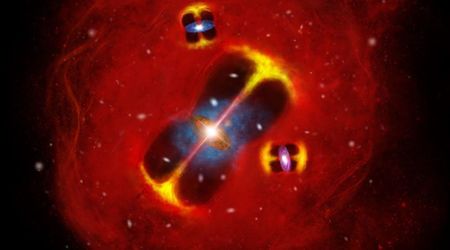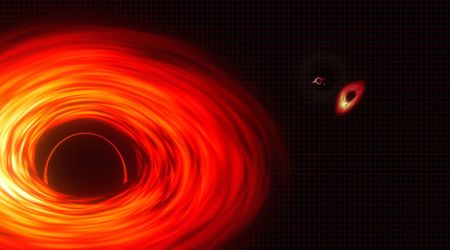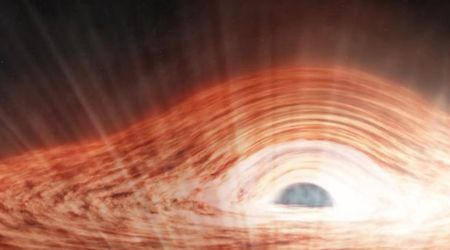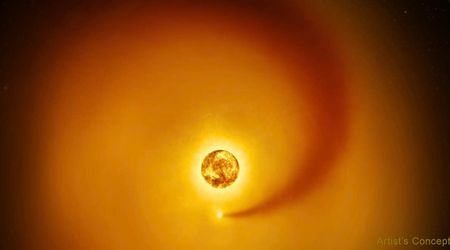Blue Origin completes 13th crewed spaceflight carrying six civilian astronauts to suborbital space

Blue Origin successfully launched its latest crewed mission on June 29, marking the 13th human spaceflight for the company's New Shepard program and its 33rd overall flight. The suborbital journey, lasting approximately 10 minutes, lifted off from Launch Site One in West Texas at 9:38 a.m. CDT, according to Blue Origin.
The six-person crew, who affectionately dubbed themselves "The Solstice 33" (as they were expectinged to take flight on the day of the summer solstice, June 21, but couldn't owing to the weather), included Allie and Carl Kuehner, Leland Larson, Freddie Rescigno Jr., Owolabi Salis, and Jim Sitkin. As recorded by the Association of Space Explorers' Registry of Space Travelers, Carl Kuehner became the 70th individual to fly with Blue Origin, and the 750th person in history to reach space, as per Space.com.
We just completed our 13th human spaceflight and the 33rd flight of the New Shepard program. The astronaut crew included Allie Kuehner and her husband, Carl Kuehner, Leland Larson, Freddie Rescigno, Jr., Owolabi Salis, and Jim Sitkin. To date, New Shepard has flown 70 people to… pic.twitter.com/A3cHMAefZs
— Blue Origin (@blueorigin) June 29, 2025
The New Shepard capsule, named "RSS Kármán Line," carried its passengers to an altitude of 345,044 feet (105.2km), comfortably exceeding the Kármán Line, the internationally recognized boundary of space at 62 miles (100 kilometers). During their brief flight, the crew experienced several minutes of weightlessness and witnessed the Earth's curvature against the vastness of space. Both the propulsion module, "Tail 5," and the crew capsule executed flawless autonomous landings near the launch site.
Among the diverse passenger manifest were an environmentalist, a real estate development firm chairman, a former public transportation CEO, an electrical wire and cable distributor, and two attorneys. In addition to the crew, the mission carried over 1,000 physical and digital postcards from students and the public, collected as part of Blue Origin's Club for the Future initiative. The cost per seat for the NS-33 mission was not disclosed. June 29's flight brought the total number of individuals who have participated in suborbital spaceflights to 123.
Learn more about the NS-33 crew before their flight to space today! pic.twitter.com/7t7jw9K1wu
— Blue Origin (@blueorigin) June 29, 2025
The recent NS-33 mission builds upon a steady cadence of flights, including the successful NS-32 mission that launched on May 31. This earlier flight also carried six individuals into suborbital space aboard the New Shepard vehicle, demonstrating the company's consistent operational tempo. Blue Origin's CEO, Dave Limp, has consistently emphasized the dual purpose of these missions: they not only represent a viable business model for commercial space tourism but also serve as a critical platform for rigorous testing and the continued development of cutting-edge aerospace technology.
We just completed our 12th human spaceflight and the 32nd flight of the New Shepard program. The astronaut crew included K-12 STEM teacher Aymette Medina Jorge, radiologist turned explorer Dr. Gretchen Green, former Panamanian ambassador to the United States Jaime Alemán,… pic.twitter.com/QbDeTC6owv
— Blue Origin (@blueorigin) May 31, 2025
The NS-32 flight, originating from Launch Site One in West Texas, mirrored the latest mission's successful profile, with the New Shepard capsule lifting off at 9:39 a.m. Eastern time, reaching a peak altitude of 105 kilometers before safely returning to Earth approximately 10 minutes later, closely followed by its booster. The diverse crew of NS-32 showcased the broad appeal of spaceflight: Aymette (Amy) Medina Jorge, a Texas teacher sponsored by Farmacias Similares; Dr. Gretchen Green, a radiologist and entrepreneur; Jaime Alemán, a Panamanian lawyer and former ambassador of the United States; Jesse Williams, a Canadian entrepreneur and adventurer; Mark Rocket, a New Zealand businessman and early investor in Rocket Lab; and Paul Jeris, a real estate developer.
NS-32 was the 12th crewed flight for Blue Origin's New Shepard program, bringing the total number of unique individuals who had journeyed to space on the vehicle to 64 before the NS-33 mission, with four crew individuals having flown on multiple occasions. It also marked the fourth New Shepard flight of the year, with three carrying passengers and one dedicated to a payload-only flight that successfully simulated lunar gravity for technology testing.









